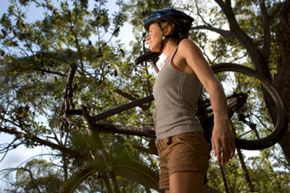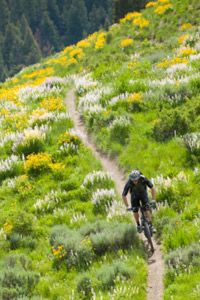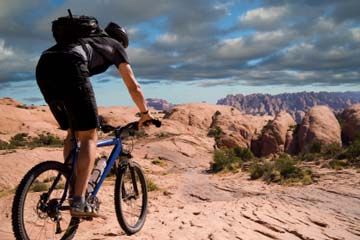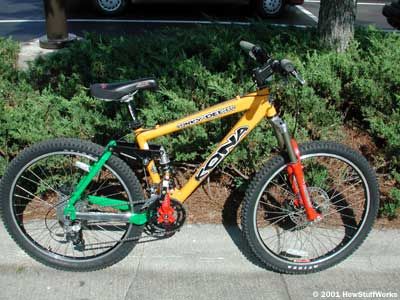When you think of mountain biking, what comes to mind? For many, mountain biking evokes images of a mud-splattered young rider flying over impossible obstacles or a pair of bikers racing down a near-vertical descent. While mountain biking can be a thrilling sport, it's also a leisurely pastime for a growing number of participants. In fact, nearly 1 out of 5 Americans over the age of 16 has tried mountain biking, and the average rider is in his or her late 30s [sources: Shimano, Green].
While the young hotshots get most of the attention in this sport, millions of others are riding for their own enjoyment. Some are adventure sports fans seeking the newest thrill, while others are simply looking for a way to enjoy the beauty of nature, or to add some variety to their fitness routines.
Advertisement
Mountain biking can be performed on any off-road surface. While mountain trails are among the most popular spots, bikers also flock to deserts and national parks to add some variety to their routine. This sport is popular not only in North America, but also in Europe and much of Asia. Destination mountain biking provides an opportunity to explore further fields as bikers travel the globe looking for the next great trail.
While racing and thrills are easy to find in this sport, mountain biking actually encompasses a number of various divisions aimed at different types of riders and interest levels. Cross-country biking is the most popular, and involves rides on mountain trails of all shapes and sizes. There's less emphasis on speed and tricks and a greater focus on variety and all-around enjoyment of the sport. Downhill riders are those seeking thrills in the form of fast descents. Many downhill riders use vehicles or lifts to reach the peak of the mountain before racing back to the bottom by bike. Freestyle riders perform more technical riding, including jumps and other tricks, while participants in mountain bike orienteering use compasses and GPS systems to navigate the backcountry as they ride. As this sport expands, additional disciplines are sure to follow.
Advertisement




